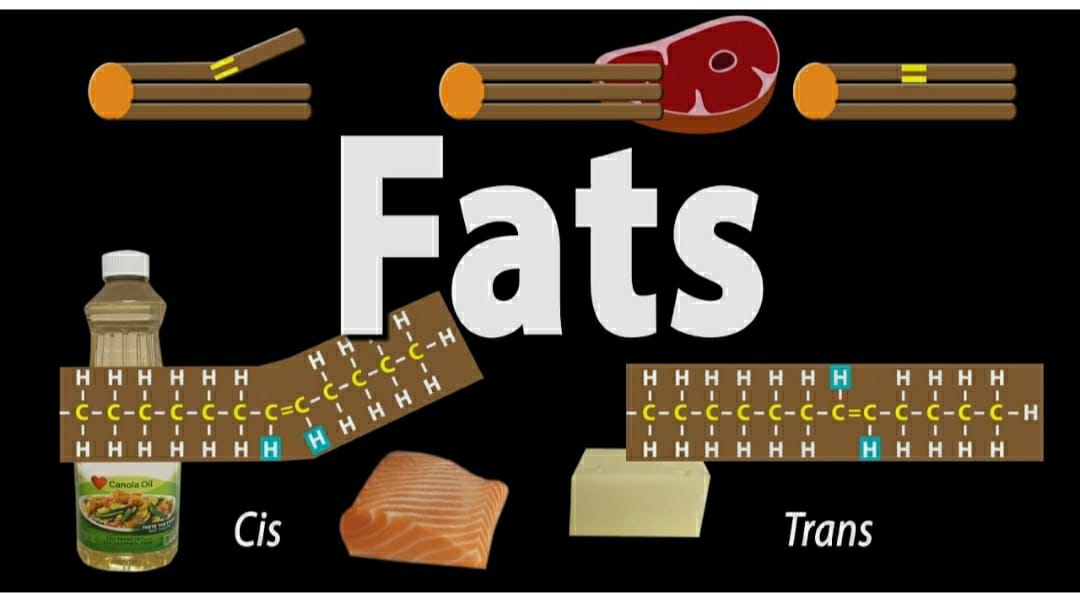All fats are a combination of fatty acids, which are building blocks of fats.
To illustrate the difference between the terms saturated, monounsaturated and polyunsaturated, picture a fat molecule as a bus (carbon atoms). If every seat on the bus is filled by a passenger” (hydrogen atom), then this is a saturated fat molecule. If there’s one seat available in each section of seats, where a hydrogen-atom “passenger” can sit, this molecule is monounsaturated; if there are several seats available, it’s polyunsaturated. Saturated fats are the nutritional “bad guys” because they’re known to be associated with some forms of cancer and to increase cholesterol levels, which can be a contributing factor to heart disease.
Trans fats:
Hydrogenated (or partially hydrogenated) oils have been chemically transformed from their normal liquid state (at room temperature) into solids. During the hydrogenation procedure, extra hydrogen atoms are pumped into unsaturated fat. This process creates TRANS FATTY ACIDS, converting the mixture into saturated fat and obliterating any benefits it had as polyunsaturated fat Trans fats are more damaging than regular saturated fats.
Monounsaturated fats are known to help reduce the levels of LDL (the bad) cholesterol.
Polyunsaturated fats are also considered relatively healthy.
Essential fatty acids: Only two fatty acids are known to be essential for humans:
Alpha-linolenic acid (an omega-3 fatty acid) andlinoleic acid (an omega-6 fatty acid).
Omega-3 Fatty acid is found in some plants (such as FLAX SEED) and in the tissues of all sea creatures. These special polyunsaturated oils have been found to be particularly beneficial to coronary health (purportedly lowering the bad LDL cholesterol and elevating the good HDL) as well as to brain growth and development.
Omega-6 fatty acid: Vegetable oils are a major source of omega-6 linoleic acid.
Ratio of omega-6 to omega-3
Some medical research suggests that excessive levels of omega-6 fatty acids from seed oils relative to certain omega-3 fatty acids may increase the probability of a number of diseases..
A high proportion of omega-6 to omega-3 fat in the diet shifts the physiological state in the tissues toward the pathogenesis of many diseases: prothrombotic, proinflammatory, like arthritis, inflammation.
Both omega-3 and omega-6 are metabolized by the same enzymes, meaning an imbalanced ratio can affect how the other is metabolized. However, consumption of non-rancid nuts, which are high in omega-6, is associated with a lower risk for some diseases, such as cardiovascular diseases including coronary heart disease (CHD), cancer, stroke, heart attacks, and lower rates of premature death.
The optimal ratio is thought to be 4-to-1 or lower--(omega-6 to omega-3)


